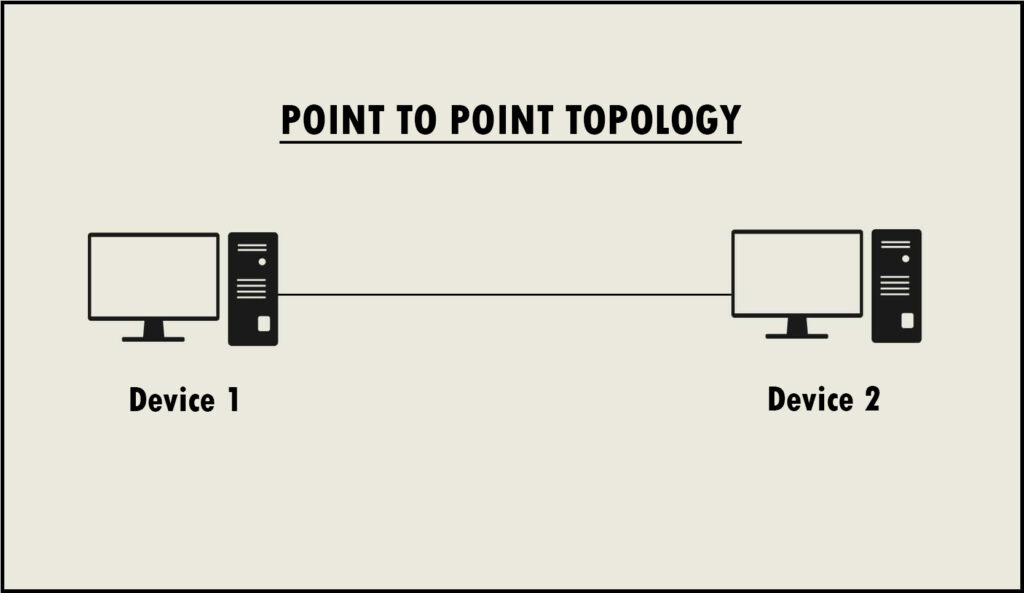What is point to point topology with example
Definition of point to point topology
“A point to point topology is a way of connecting two nodes (computer, laptop, mobile device, router, hub or switch) through a common medium. The medium can be wired cable or wireless satellite.”
 Diagram of point to point topology
Diagram of point to point topology
In this topology, two nodes are usually placed near each other. The node can also be a router or hub. In the case of a router or hub, one connection is made between a computer and a router, hub or switch.
The communication between two nodes can be either simplex, half-duplex or full-duplex. In the simplex mode of communication, only one node can send data. In half-duplex, both devices (nodes) can send data but one at a time. In full-duplex, both devices can send data at a time.
The medium to make a connection can be either microwave-based, dedicated fibre or leased line.
Characteristics of point to point topology
Some features of point to point topology are:-
- High bandwidth
- Easy replacement of node
- Connection speed is fast
- Troubleshooting is easy
- Maintenance is easy
- Low latency rate
- The mode of connection is simple
- Low cost
Example of point to point topology
- The connection between TV and remote control
- The connection between AC and remote control
- Connecting two computers in LAN (local area network
- The connection between a router to a router
- The connection between a router and a workstation















![Toni Kroos là ai? [ sự thật về tiểu sử đầy đủ Toni Kroos ]](https://evbn.org/wp-content/uploads/New-Project-6635-1671934592.jpg)


